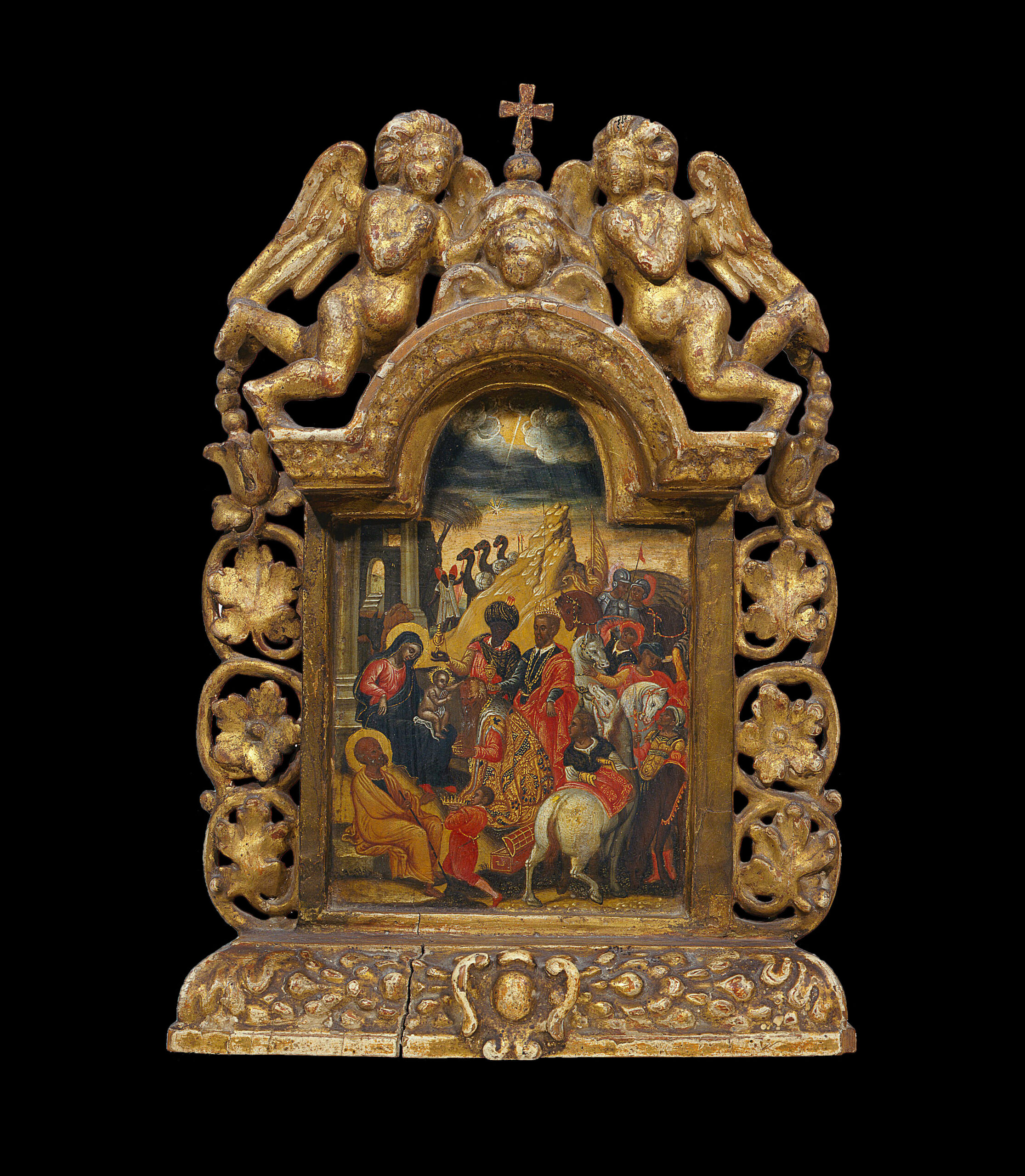

Leaf from a triptych with a depiction of the Adoration of the Magi
Central leaf of a triptych with a wooden, carved, gilded frame crowned by a pair of putti flanking a cross. On the left, depicted seated at the entrance to a building, the Virgin is holding Christ in her arms, while Joseph is seated below. In the centre of the composition, the three Magi, opulently dressed and with specific facial and racial characteristics, are offering their Gifts. Crowded on the left, a dense group of servants, pack animals and mounted soldiers. On a second level, a steep mountain rears up, a reminder of the Byzantine tradition, while behind it two camel-drivers emerge with three loaded camels. The naturalistic rendering of the cloudy sky pierced by a ray of light emitted by the Star of Bethlehem that has led the Magi to their destination has done away with the model’s usual golden background. This intensifies the reference to works of Italian Mannerism and older models in general. The unknown artist copied the triptych depicting the same subject by the Cretan painter Michael Damaskenos in the church of Saint Aikaterini of the Sinaites in Heraklion, Crete, a common practice among 17th-century Cretan painters.
PUBLICATION
Skampavias K. 2007. Catalogue no. 187, in Skampavias K.—Chatzidakis N. (eds), Paul and Alexandra Canellopoulos Museum.Byzantine and Post-Byzantine Art, Athens, 354–357.
